
Stative Verb Definition, List and Examples of Stative Verbs • 7ESL
Stative Verbs List Some verbs are only (or mostly) used in simple tenses, and are not used in continuous tenses. An example of a simple tense is the present simple, or the past simple. An example of a continuous tense is the present continuous or past continuous. These verbs are called stative, or state verbs.
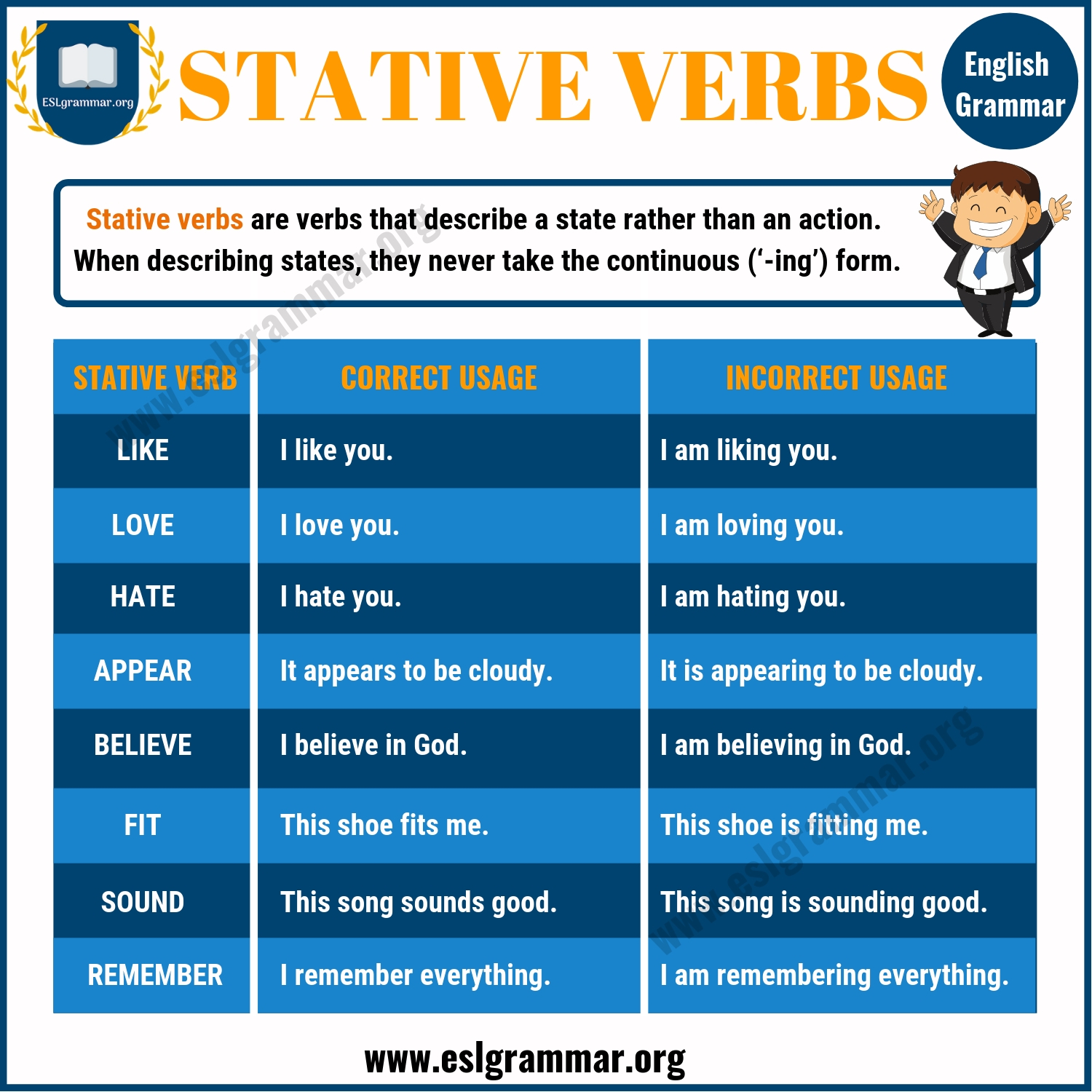
Plattform entlassen Schleifen stative verbs song Great Barrier Reef
paddydog Stative Verbs This is a simple description and exercise sheet for upper intermediate/First Certificate students. It tries to explain which verbs CANNOT be used in the continuous tense. 1277 uses Ayelyn Stative Verbs This lesson is a grammar guide to using stative verbs. Students can learn how to describe emotions and appearance.

Stative Verb Definition, List and Examples of Stative Verbs • 7ESL
Stative Verbs: Here Is A List of The Most Common Stative Verbs! | PDF Stative Verbs.pdf - Read online for free.

a table that has some words on it and an image of the same thing in
Listen! something is happening at the same time of speaking or around it future meaning: when you have already decided and arranged to do it (a fixed plan, date) to be (am/are/is) + Infinitive + ing I'm working. He's working. I'm going. He's going. I'm not working. He isn't working. I'm not going. He isn't going. Am I working? Is he working?

Stative Verbs List, Definition and Words List PDF Worksheet For
List of stative verbs with examples Some verbs can be stative and active. They are in green. 1. agree (also disagree) I really agree with you on everything you've just said. My husband and I pretty much agree on everything. I am really agreeing with you. Remember! Don't use stative verbs in a continuous tense! 2. be 5. consist
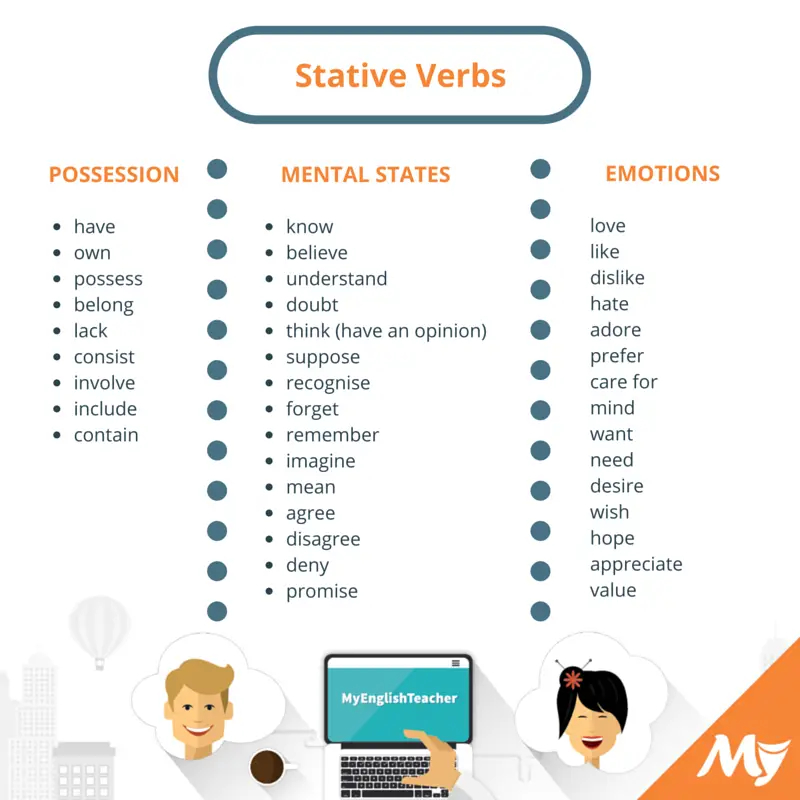
All State Verbs List in English with Examples! MyEnglishTeacher.eu
The following list shows the most common stative verbs (or state verbs), which do not appear in the ing form according to the rule. Some of the verbs have a change in meaning depending on how they are used, as listed under state (stative) verbs. List of verbs without ing usage.

stativeverbsstudylist.pdf
Sribbrlistofstativeverbs ListofStativeVerbs Thoughts Emotions Senses Possession Other (dis)agree envy appear belong be/are/is believe fear feel comprise cost doubt hate hear consist depend
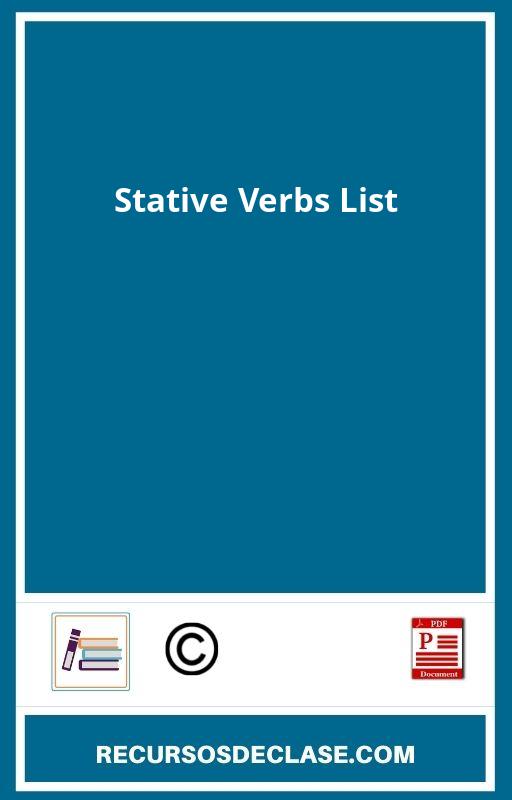
Stative Verbs List PDF 】 2023
On the other hand, a stative verb expresses a state of being or a condition (I am tired). Unlike action verbs, stative verbs are not used as continuous tense (- ing), verbs. For example, we do not normally say I am being tired. Stative verbs express states of being (for example, was), preferences (like), perceptions (hear), beliefs (hope.

STATIVE VERBS with keys added English ESL Worksheets for distance
In English grammar a "stative verb" means that the verb describes a staterather than an action. Stative verbs are sometimes known as "state Kevin wants some cake. verbs." Example sentences with dynamic verbs: Example sentences with stative verbs: • can't talk right now, I'm eating dinner."
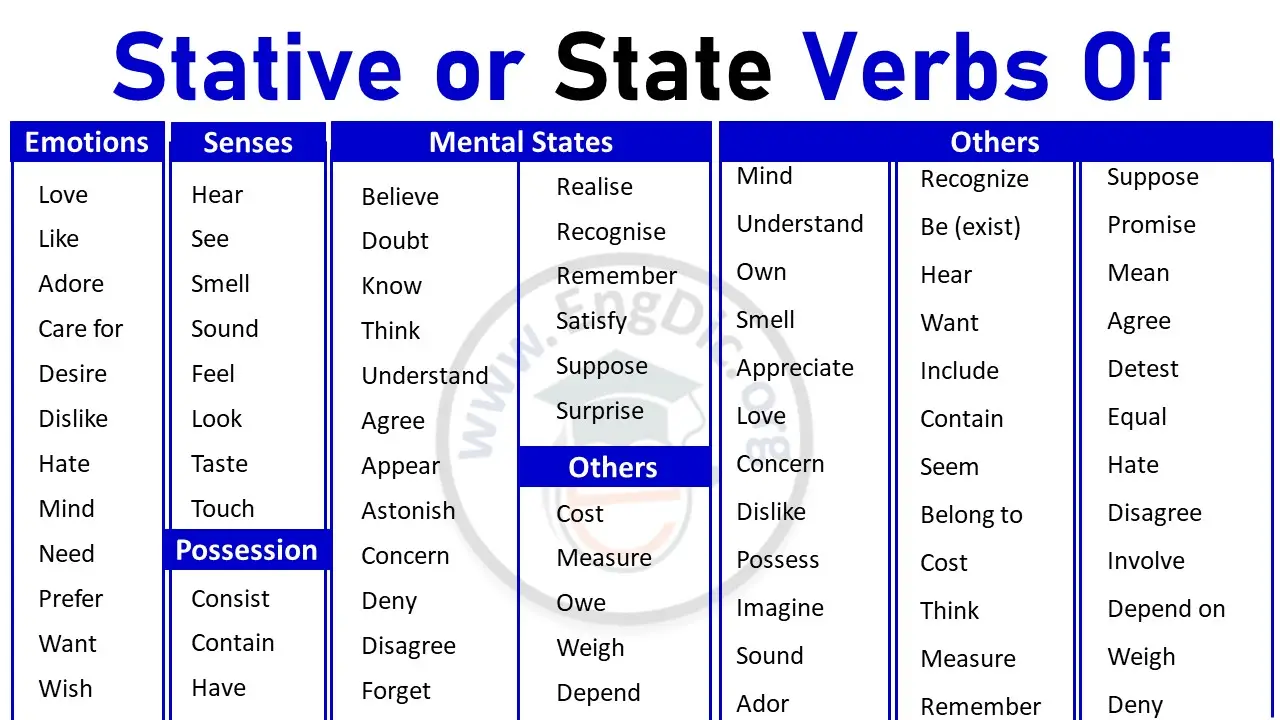
Leckage Vorschau Stewardess stative verbs pdf Bermad Unterhalten Ältere
Stative Verbs List Some verbs are only (or mostly) used in simple tenses, and are not used in continuous tenses. An example of a simple tense is the present simple, or the past simple. An example of a continuous tense is the present continuous or past continuous. These verbs are called stative, or state verbs.
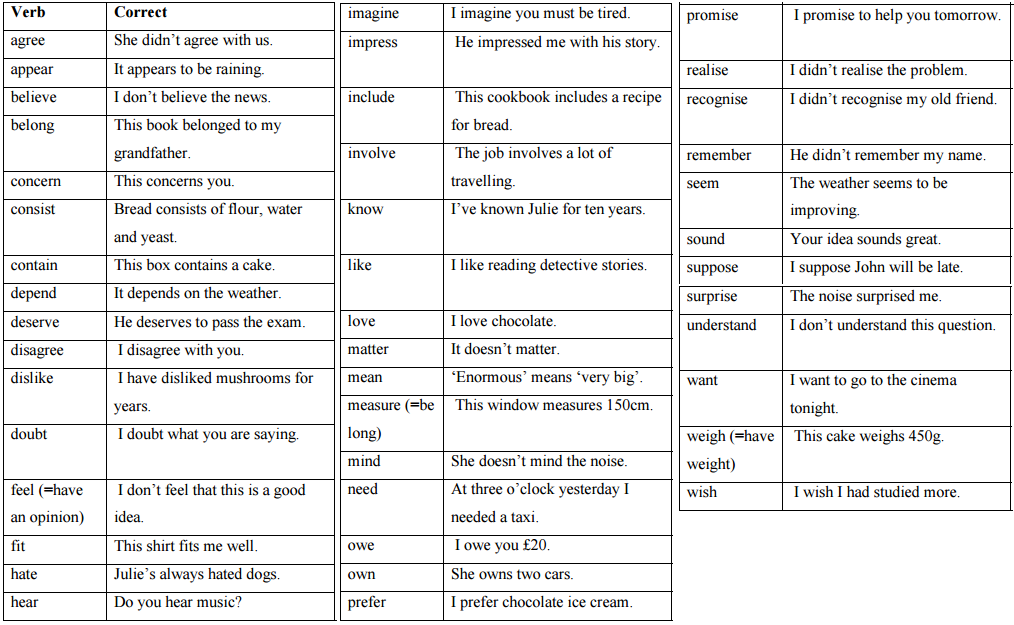
Let's Learn English Statives Verbs
An
example of a continuous tense is the present continuous or past continuous. These
verbs are called stative, or state verbs. A verb which isn't stative is called a dynamic
verb, and is usually an action. Often stative verbs are about liking or disliking

Stative Verbs And Dynamic Verbs List Verbs Worksheet
Perfect English Grammar How to use stative (state) and dynamic verbs Download a complete list of stative verbs with lots of examples in PDF here Try an exercise about stative verbs here Some English verbs, which we call state, non-continuous or stative verbs, aren't used in continuous tenses (like the present continuous, or the future continuous ).

Pin on English
What Are Stative Verbs? Stative verbs are verbs that do not express action but a state. These verbs usually relate to thoughts, emotions, senses, relationships, and measurements. The most common stative verbs are feel, see, hear, have, like, and want. For example: I want a new laptop. She feels happy today because she received flowers.
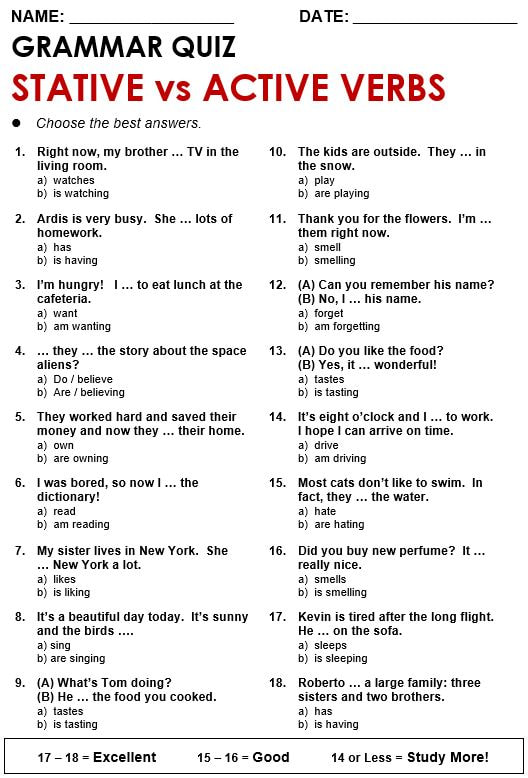
účet Na pozici suspenze action and non action verbs list pdf Někdy
In English grammar, a "stative verb" means that the verb describes a state rather than an action. Stative verbs are sometimes known as "state verbs." Look at these state verb examples: I hate this song. The report contains a great deal of statistical information. I appreciate John's helping in time. I want you to meet my parents.

107shares Learn useful list of Stative Verbs in English with examples
Grammar explanation Stative verbs describe a state rather than an action. They aren't usually used in the present continuous form. I don't know the answer. I'm not knowing the answer. She really likes you. She's really liking you. He seems happy at the moment. He's seeming happy at the moment. Stative verbs often relate to:

stative verbs use Hledat Googlem Verb practice, Verb, Esl
button below! Grammar Worksheet Stative Verbs. Complete the 16 sentences by using the words in the box. ANSWER KEY and percentage conversion chart on Page 2. Intermediate to Advanced Level. Approximately 15 minutes. . Download the PDF file by clicking on the gold.